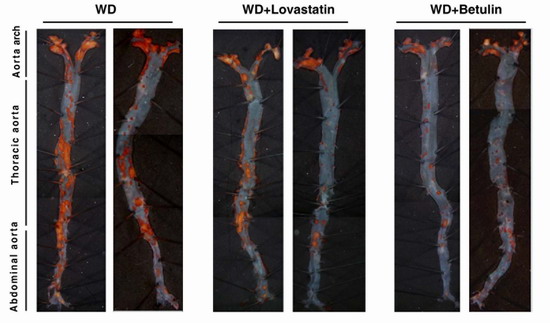Betulin- A potential compound for treating hyperlipidemia
Source:
Time: 2011-01-06
Hyperlipidemia is closely related to metabolic diseases, such as atherosclerosis and type II diabetes, which are becoming worldwide problems. Recently, a research team, led by Prof. SONG Baoliang, from Shanghai Institute of Biochemistry and Cell Biology (SIBCB), discovered that by a small molecule, Betulin, improves hyperlipidemia and insulin resistance and reduces atherosclerotic plaques by inhibition of sterol regulatory element-binding proteins (SREBP).
In mammals, SREBPs are major transcription factors activating the expression of genes involved in biosynthesis of cholesterol, fatty acid and triglyceride. In this study, the researchers identified a small molecule, betulin, which specifically inhibited the maturation of SREBP by inducing interaction of SREBP cleavage activating protein (SCAP) and Insig. Inhibition of SREBP by betulin decreased the biosynthesis of cholesterol and fatty acid. In vivo, betulin ameliorated diet-induced obesity, decreased the lipid contents in serum and tissues, and increased insulin sensitivity. Furthermore, betulin reduced the size and improved the stability of atherosclerotic plaques. Prof. Song’s study demonstrates that inhibition SREBP pathway can be employed as a therapeutic strategy to treat metabolic diseases including type II diabetes and atherosclerosis. Therefore, Betulin, which is abundant in birch bark, could be a leading compound for development of drugs for hyperlipidemia.
The research was published online in Cell Metabolism on January 5th, 2011.
This work was supported by grants from the Ministry of Science and Technology of China, the National Natural Science Foundation of China, the Chinese Academy of Sciences, and the Science and Technology Commission of Shanghai Municipality. (SIBCB)
AUTHOR CONTACT:
SONG Baoliang, Ph.D.
Shanghai Institute of Biochemistry and Cell Biology, Shanghai Institutes for Biological Sciences, Chinese Academy of Sciences, Shanghai, China.
Telephone: +86- 21-54921649 ; E-mail: blsong@sibs.ac.cn
Representative photographs from en face analysis of aortas from different groups after 14 week treatment.
Picture Provided by SIBCB Prof. SONG Baoliang’s Group

 Appendix:
Appendix: